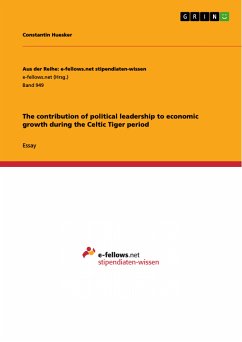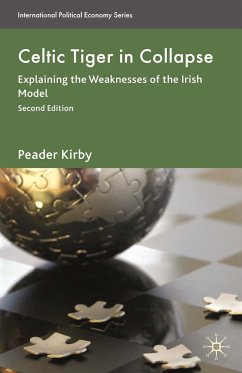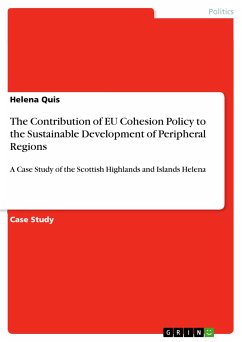Essay from the year 2011 in the subject Politics - Topic: European Union, grade: 70%; 1,5, Dublin City University, course: Introduction to Modern Ireland, language: English, abstract: In 2007 the real GDP growth rate was at 6%. In 2007 the unemployment rate was at 4%. In 2007 general government debts accounted for 25% of the GDP. These are some facts on Ireland by the end of 2007. All three figures are well below the EU average and Ireland is one of the wealthiest countries worldwide. Ireland's economic success is unprecedented in Europe. Therefore the green Island was also known as the "Celtic Tiger". Critics argue that Ireland's economic success predominantly arose from external factors, such as EU grants and Foreign Direct Investment (FDI). But is this really the case? Probably not, but it was the political framework that established the favourable economic environment. This paper analyses the impact of political leadership to the economic boom between 1990 and 2007. Since it was not a single decision that attracted foreign firms, but rather an evolving process that fuelled Ireland's economy, the essay covers the whole period of time between the 1950s and the 2000s.
Dieser Download kann aus rechtlichen Gründen nur mit Rechnungsadresse in A, B, BG, CY, CZ, D, DK, EW, E, FIN, F, GR, HR, H, IRL, I, LT, L, LR, M, NL, PL, P, R, S, SLO, SK ausgeliefert werden.









